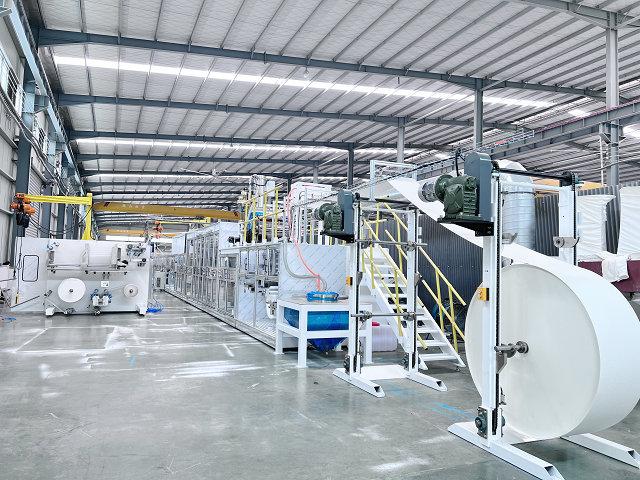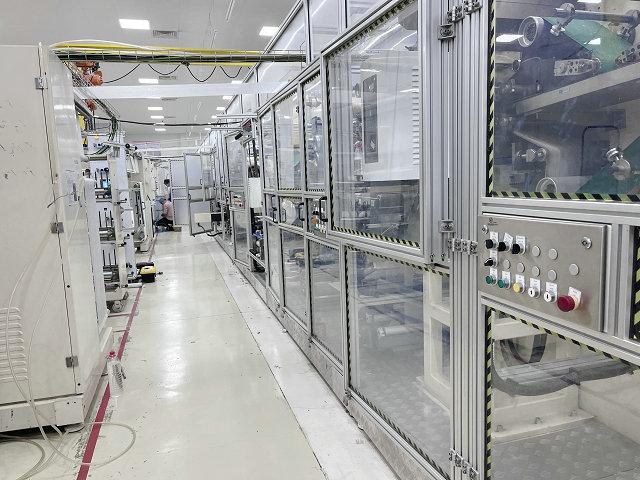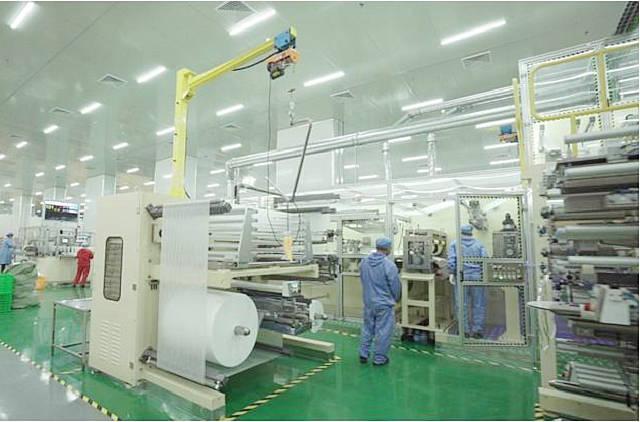Author:Haina Machinery Factory FROM:Diaper Machinery Manufacturer TIME:2024-11-15
The production of sanitary pads machines is closely tied to market demand, reflecting changes in consumer preferences, economic conditions, and societal awareness regarding menstrual health. As the global conversation around women's health continues to evolve, so does the need for efficient and effective manufacturing solutions. This article explores how market demand influences the production of sanitary pad machines, examining various factors that contribute to this dynamic industry.
Market demand for sanitary pads is driven by a variety of factors, including population growth, awareness campaigns, and cultural shifts towards menstrual health. As more women enter puberty and reproductive age, the demand for hygienic menstrual products rises. Additionally, increased awareness about the importance of menstrual hygiene, fueled by educational initiatives and advocacy from non-profit organizations, has significantly shifted consumer preferences towards quality products. Consequently, manufacturers must adapt their production strategies to meet this growing demand.

Economic conditions play a pivotal role in determining the scale and efficiency of sanitary pads machine production. During periods of economic growth, consumers are more likely to spend on higher-quality products, leading manufacturers to invest in advanced machinery that can produce premium sanitary pads. Conversely, during economic downturns, price sensitivity increases, compelling manufacturers to focus on cost-effective solutions. This fluctuation requires producers to remain agile, adjusting their machinery and production lines to accommodate changing market conditions.
The advancement of technology has revolutionized the production of sanitary pads. The introduction of automated and semi-automated machines has improved production efficiency, allowing manufacturers to respond swiftly to market demand. Enhanced technology not only speeds up production but also increases product quality and consistency, which are critical in a competitive market. As demand evolves, manufacturers must continuously invest in upgrading their machines to incorporate the latest innovations, ensuring they remain competitive.

Consumer preferences for sustainable and eco-friendly products are increasingly influencing market demand. Many women today prefer biodegradable or organic sanitary pads over conventional options, pushing manufacturers to adapt their production processes. This shift necessitates the development of machines capable of handling alternative materials, as well as implementing environmentally friendly practices within the production cycle. Firms that can efficiently pivot to meet these preferences often gain a competitive edge in the marketplace.
Geographical factors also impact the demand for sanitary pads machine. In developing countries, there is often a significant push to improve access to menstrual hygiene products, leading to increased demand for affordable sanitary pads. Manufacturers targeting these markets may opt for simpler, low-cost machines that can quickly ramp up production. In contrast, developed markets often prioritize quality and innovation, leading to investments in high-tech machinery. Understanding these regional differences is crucial for manufacturers looking to optimize production according to specific market needs.
Regulations surrounding health and safety standards for sanitary products can significantly affect production. Compliance with these regulations often requires manufacturers to invest in more advanced machinery that meets stringent criteria. Additionally, changes in regulations can alter market demand, prompting manufacturers to adjust their production lines accordingly. Staying informed about regulatory developments is essential for manufacturers to ensure that their products remain compliant and competitive.
Effective marketing strategies can enhance market demand and influence production decisions. Brands that successfully communicate the benefits of their products and align them with consumer values can stimulate interest and increase sales. This heightened demand may lead manufacturers to increase production capacity or diversify their product offerings. Marketing trends, such as the rise of social media influencers advocating for menstrual health, further highlight the importance of strategic branding in driving demand.
Despite the increasing demand for sanitary pads, manufacturers face several challenges. Raw material shortages, fluctuating prices, and supply chain disruptions can hinder production capabilities. Additionally, maintaining high-quality standards while scaling up production to meet demand poses a persistent challenge. To navigate these obstacles, manufacturers must invest in robust supply chain management and adopt flexible production techniques that allow for quick adjustments based on market needs.

Looking ahead, the future of sanitary pad machine production appears promising, with continued growth expected in the market. As awareness of menstrual health issues grows, along with a push for sustainable products, demand for innovative machinery will likely increase. Manufacturers who embrace technological advancements and adapt to evolving consumer preferences are poised to thrive in this dynamic environment. Building strong relationships with stakeholders and staying attuned to market trends will be vital for ongoing success.
Market demand profoundly impacts the production of sanitary pad machines, influenced by economic factors, consumer preferences, and technological advancements. As the dialogue surrounding menstrual health continues to expand, manufacturers must remain responsive to these changes to maintain competitiveness. By understanding the complexities of market demand and adapting their production strategies accordingly, manufacturers can ensure they meet the needs of consumers while also contributing positively to the broader conversation around women's health. Looking forward, those who innovate and prioritize sustainability will lead the way in transforming the sanitary pad industry.
